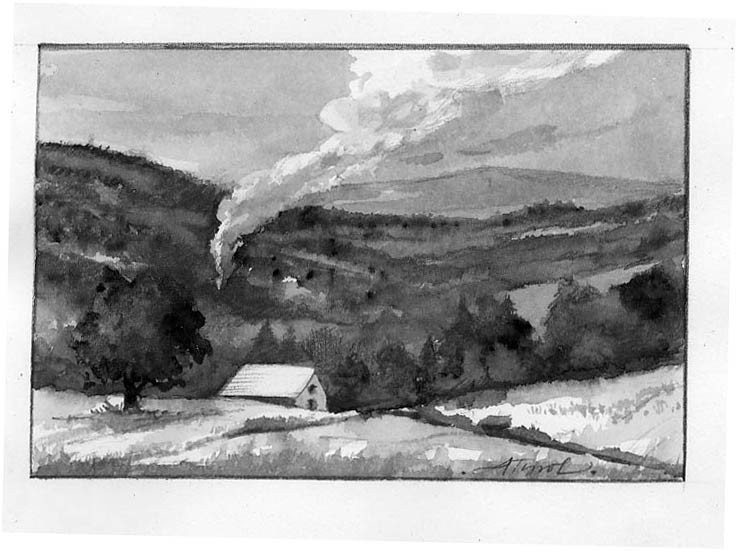
Last month, while taking advantage of the open winter to cut brush around the edges of our pasture, I thought back to one of my favorite lectures in college. The professor was a Maine native teaching a course on New England history. Leaning sternly over the podium, he warned us students about the dangers of living in the woods. He reminded us that the trees were constantly growing, even at night while we slept. That the forests were forever encroaching and threatening to wipe out the fragile beachhead of fields and pastures that we humans had labored for centuries to establish here in New England. That eternal vigilance was required, and that preemptively cutting trees whenever possible was the only way to protect our heritage and insure our future.
The class, tree-huggers by and large, many hailing from non-New England states, sat as if struck by a falling limb. Only those sitting in the front row, or those with a taste for this sort of thing, noticed the twinkle in the professor’s eye.
He was right, of course, ecologically speaking. We live in the woods here in northern New England; forests are the defining feature of our ecological niche. If we halted our clearing and haying, paving and grading, logging and lawn mowing, the woods would swallow us whole within a century.
In fact, over the past century, they nearly did. Vermont was three-quarters deforested in the middle 1800s; now it’s three quarters the other way. According the most recent U.S. Forest Service data, Maine is the most heavily forested state in the nation, with nearly 90 percent of its acres in woodland, followed closely by New Hampshire at 84 percent. Vermont picks up the bronze with 78 percent, though New York would certainly be on the podium if only the Adirondacks region of the state were counted. We live in the woods.
That’s true in another way as well: Vermont is the most rural state in the nation, with 62 percent of the population living outside of urban centers (as defined by the U.S. Census Bureau) Maine is second with 60 percent. New Hampshire is well down the list at 41 percent, but if you stripped off the seacoast, it would certainly rise to the top tier of rural performers.
Many of us are surprised to learn that our states are so rural; places like Alaska or Wyoming typically come first to mind. But here’s the crucial distinction: rural means that people live in small towns, not that a state is sparsely populated. Wyoming is actually a relatively urbanized state, with only 35 percent of its population living in small towns—even while it is also among the most sparsely populated. Rural means a village green, a church with steeple, a post office, a store with a few gas pumps, in short, communities where everybody knows everybody else.
And in New England rural means people living in the woods. Not nearby the woods or within an hour’s drive of the woods, but in the actual woods. It’s easy to forget that no other part of the country is quite like this.
We also forget because, for most of us most of the time, we spend our days in the cleared areas: among the buildings, roads, lawns, and pastures where we live much of our lives. The woods can fade into the background, except perhaps during autumn foliage season, and recede from our consciousness. We’re like kids who, having grown up in inland towns without ever having set eyes on the ocean, can be forgiven for still believing, at some level, that most of the world must be dry land.
Back on our farm, a half-century of mechanical haying has allowed saplings and small trees to slowly creep in from the old stone walls, gradually extending the forest’s hold. Few farmers want to snag a sickle bar or cutting head on a sapling or stump, so year by year, as the seedlings creep in, the hay-able field is reduced. An occasional intervention is required if you want to reverse this process, and this winter, with very little snow falling in the lower reaches of the Connecticut Valley, has been perfect.
I’ve been able to cut the larger trees and saplings right at ground level, preparing the ground for brush hogging in the spring. I figure I’ll be able to push the woods back by an average of 20 feet over a 1,000-foot treeline, which will amount to just under a half acre of new field and pasture. Very satisfying work.
You might think, after all this, that I’m anti-woods. Not at all; I spend as much time in the woods as I can. It’s just that our farm is 78 percent wooded, and I’m mindful of my former professor’s advice that eternal vigilance is the price of pasture.


Discussion *